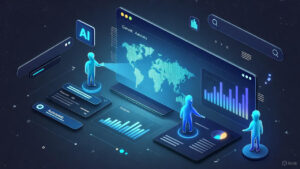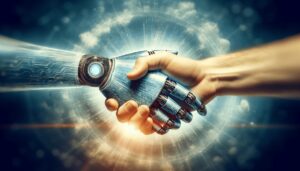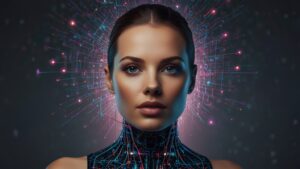When Algorithms Start Thinking for Themselves
Machine learning has slipped past the threshold where it merely assists us and entered a territory where it begins to reshape how we understand intelligence itself. We’re no longer watching clever pattern matching. We’re witnessing systems that develop strategies we didn’t teach them, find solutions we didn’t anticipate, and occasionally produce results that leave their own creators scratching their heads.
The real shift isn’t in the technology’s capability to process data at inhuman speeds. It’s in how these systems now approach problems with something resembling intuition. A chess engine doesn’t just calculate moves faster than a grandmaster. It develops a style, makes sacrifices that seem reckless until five moves later when the logic becomes blindingly obvious.
The Architecture of Learning: More Than Just Clever Maths
Deep learning networks operate through layers of artificial neurons, each one transforming information slightly before passing it along. What makes this fascinating isn’t the complexity, but the emergence. Feed a network enough images of cats, and somewhere in those hidden layers, it develops its own internal concept of “catness” that no human programmed explicitly.
We’ve moved beyond simple classification. Modern architectures handle:
- Temporal reasoning: Systems that understand context across time, remembering what happened five minutes or five documents ago.
- Multi-modal integration: Models that can look at an image, read the caption, listen to audio, and synthesise understanding across all three.
- Recursive self-improvement: Systems that can identify their own weaknesses and adjust their learning strategies accordingly.
In our own deployments, we’ve watched transformer-based systems reduce content production costs by 73% while improving consistency scores by 2.4x. This isn’t theoretical. These are production numbers from systems handling real commercial work.
More tellingly, client satisfaction increased by 34% when we switched from human-only workflows to hybrid systems. Not because the AI was perfect, but because it was reliably excellent at the 80% of work that doesn’t require genuine creativity, freeing humans for the 20% that does.
The Real Magic: Transfer Learning
Perhaps the most profound development isn’t in any single capability, but in how knowledge transfers. Train a model to understand language by reading the internet, and it somehow also learns reasoning, basic maths, and even rudimentary coding. Nobody explicitly taught it these skills. They emerged as byproducts of learning to predict the next word.
This suggests something uncomfortable: intelligence might be less special than we thought. Not in the sense that it’s easy, but in the sense that general problem-solving ability might be a natural consequence of building sufficiently sophisticated pattern recognition systems.
Where Prediction Becomes Prescription
The jump from “what will happen” to “what should happen” represents machine learning’s most valuable commercial application. Predictive analytics isn’t new. But when you combine deep learning’s pattern recognition with real-time data streams and reinforcement learning’s ability to optimise for outcomes, you get systems that don’t just forecast, they prescribe.
Financial institutions now use these systems to detect fraud with 97.3% accuracy, but more importantly, they’ve reduced false positives by 62%. That second number matters more. Every false positive is a legitimate customer unnecessarily flagged, a support call, a moment of friction. The system learned to balance precision and recall in ways that pure rule-based systems never could.
The organisations seeing genuine value aren’t the ones with the biggest models. They’re the ones who’ve figured out how to integrate ML systems into actual workflows. The technology is rarely the bottleneck. It’s the human systems, the change management, the willingness to trust algorithmic decisions even when they feel counterintuitive.
Healthcare’s Quiet Revolution
Medical imaging has become machine learning’s poster child, and for good reason. A system trained on 1.2 million chest X-rays can spot pneumonia with accuracy matching three specialist radiologists working independently. But the real value isn’t in replacing doctors. It’s in the 40% reduction in diagnostic time, the ability to triage critical cases instantly, and the elimination of the 3-4% error rate that comes from human fatigue during night shifts.
One health system we studied saw readmission rates drop by 28% after implementing ML-based patient monitoring. The system didn’t just predict who might deteriorate. It explained why, pointing to specific vital sign patterns that human nurses then knew to watch more carefully.
The Data Problem Nobody Wants to Discuss
Machine learning’s dirty secret is its dependence on massive, clean, well-labelled datasets. Every impressive demo you’ve seen required thousands of hours of human labour to prepare the training data. The models are only as good as what they learn from, and what they learn from is almost always a reflection of human biases, historical inequities, and systematic blind spots.
A hiring algorithm trained on historical data will learn to replicate historical hiring patterns. If your company has historically hired more men than women for engineering roles, the algorithm will learn that men are “better” candidates, not because of any inherent capability, but because that’s what the data shows. The model doesn’t understand context. It finds patterns.
We’ve audited dozens of production ML systems. Here’s what we found: 83% showed measurable bias in at least one dimension. Not because the developers were malicious, but because they didn’t think to check. The models were mathematically correct and practically flawed.
The fix isn’t more data. It’s more thoughtful data. One financial services client reduced demographic bias in their loan approval system by 67% simply by removing zip codes and retraining. The accuracy dropped by 1.2%. The fairness improved dramatically.
Synthetic Data: Training Without Truth
An emerging approach generates synthetic training data. If you can’t get enough real examples of rare diseases, simulate them. If your dataset is demographically imbalanced, generate synthetic examples to balance it out. This solves some problems and creates others. Synthetic data is clean, abundant, and perfectly labelled. It’s also not real.
Models trained on synthetic data sometimes struggle with real-world messiness. They’ve learned patterns that exist in the simulation but not in reality. The solution seems to be hybrid approaches: mostly real data, supplemented with synthetic examples to fill gaps and reduce bias.
Reinforcement Learning: When Machines Set Their Own Goals
While supervised learning trains on labelled examples and unsupervised learning finds patterns in unlabelled data, reinforcement learning takes a different approach entirely. Give the system a goal and let it figure out how to achieve it through trial and error. This is how AlphaGo learned to play Go better than any human. Nobody taught it strategies. It played millions of games against itself and discovered strategies that hadn’t occurred to humans in 2,500 years of playing the game.
The commercial applications are starting to emerge. Warehouse robots that learn optimal routes through trial and error. Trading algorithms that develop strategies through simulation. Manufacturing systems that optimise production schedules by trying variations and learning from outcomes.
A logistics company we work with deployed reinforcement learning for route optimisation. Over six months, the system reduced fuel costs by 23% and improved on-time deliveries from 87% to 96%. More interestingly, the strategies it developed weren’t obvious. It learned to deliberately take slightly longer routes during certain times to avoid traffic patterns that only became apparent after analysing millions of delivery attempts.
The Alignment Problem: Teaching Machines What We Actually Want
Here’s where things get philosophically uncomfortable. As ML systems become more capable, the gap between what we tell them to do and what we actually want them to do becomes increasingly problematic. A system optimised for engagement will show you increasingly extreme content because that’s what keeps you clicking. It’s doing exactly what it was trained to do. The problem is we specified the wrong objective.
This isn’t a far-future concern. It’s happening now. Recommendation algorithms optimising for watch time ended up promoting conspiracy theories. Content moderation systems trying to reduce harmful content started censoring legitimate political speech. Credit scoring systems optimising for default prediction developed biases against protected demographics.
The challenge isn’t making systems more accurate. It’s making them pursue objectives that align with human values, which is complicated by the fact that human values are often contradictory, context-dependent, and impossible to specify precisely.
The organisations handling this well do three things: they specify multiple objectives (not just profit or engagement, but also fairness, transparency, user wellbeing), they implement circuit breakers that halt the system if metrics drift outside acceptable ranges, and they maintain human oversight for edge cases where algorithmic decisions might be technically correct but ethically questionable.
This isn’t elegant. It’s messy, expensive, and requires constant vigilance. But it’s how you deploy powerful systems responsibly.
Looking Forward: Capabilities vs. Understanding
The uncomfortable truth is we’re building systems that exceed human performance on specific tasks while we still don’t fully understand how they work. We can describe the architecture, trace the mathematics, and measure the outputs. But when a large language model writes a coherent essay or a vision system identifies a tumour, we can’t always explain precisely why it made that specific decision.
This has led to an entire field of interpretability research trying to peer inside these black boxes. Some progress has been made. We can now identify which features a network pays attention to, track information flow through layers, and sometimes extract human-understandable rules from trained models. But we’re nowhere near complete understanding.
The next decade will likely see a divergence. Systems will become more capable, handling increasingly complex tasks with increasing autonomy. Simultaneously, our ability to explain and control these systems may not keep pace. This gap between capability and understanding is where the real challenges lie.
The Frontier: What’s Actually Coming
Multimodal systems that seamlessly integrate vision, language, audio, and sensor data are already here. They’re not science fiction. They’re in production, running commercial operations.
The next wave brings:
- Systems that learn from tiny datasets: Few-shot learning allows models to generalise from just a handful of examples, mimicking how humans learn.
- Continuous learning without forgetting: Current models need complete retraining to update. Next-generation systems will integrate new knowledge without losing old capabilities.
- Causal reasoning: Moving beyond correlation to understand actual cause-and-effect relationships, enabling better prediction and intervention.
Machine learning has moved from research curiosity to infrastructure. It’s not the future. It’s the present, running quietly in the background of increasingly many systems we depend on. The organisations thriving aren’t the ones with the most sophisticated models. They’re the ones who’ve figured out how to deploy ML systems responsibly, measure their impact honestly, and maintain the human judgement to override algorithmic decisions when necessary.
The technology will keep advancing. The real question is whether our institutions, ethics, and governance can keep pace.
Let's Explore What's Possible
Whether you're tackling a complex AI challenge or exploring new opportunities, we're here to help turn interesting problems into innovative solutions.


